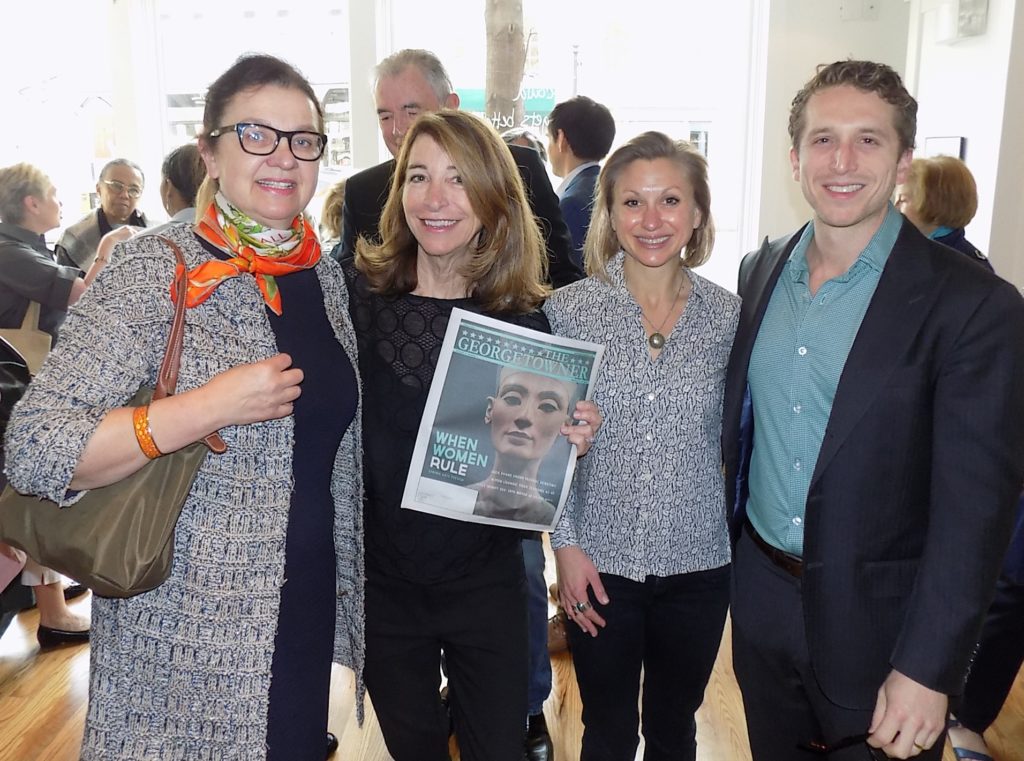Telling Stories at National Geographic Museum
By • April 18, 2019 0 1030

Twenty-three years ago, in 1996, the National Geographic Museum had “lines around the block” to see the 500-year-old “Ice Maiden,” the frozen body of an Inca girl found in the Andes. Though thousands of schoolchildren visited back then to see, among other attractions, the giant globe in the lobby, blockbuster exhibitions were “few and far between,” according to Kathryn Keane, the museum’s director, who joined National Geographic in 2006.
Nearly 50 people came to hear Keane’s talk at Georgetown Media Group’s April 11 Cultural Leadership Breakfast, held at 1310 Kitchen & Bar by Jenn Crovato, in part due to “Queens of Egypt,” the latest in a string of blockbusters on topics such as the Titanic, ancient Greece, sharks and the tomb of Christ.
Keane remarked that the National Geographic Society has been “telling stories about Egypt since 1907.” On view through Sept. 15, “Queens of Egypt,” created in partnership with the Museo Egizio in Turin, Italy, was inspired in part by the current interest in women and power.
The show features one of two replicas of the Nefertiti bust in Berlin’s Neues Museum (Hitler said of the original, which was going to be exchanged for other artifacts, “This is not going back to Egypt,” commented Keane), a dozen sarcophagi, objects from an artisans’ village and multimedia kiosks presenting new scientific research, including chromatography on residue of what may have been Cleopatra’s perfume.
When Keane asked her boss, the society’s CFO, if the museum could sell the scent in the shop, he replied that the FDA would have to test it first. “He’s very risk-averse,” she explained.
Many in the audience were pleasantly surprised to learn of Keane’s Georgetown connections. She is not only a Georgetown University alumna, but a fourth-generation Washingtonian; her grandfather owned two buildings on Wisconsin Avenue.
Keane began at the society as director of traveling exhibitions. She “paddled my life raft over there” from the Corcoran Gallery of Art, where she was Corcoran Director David Levy’s deputy for 11 years. The Corcoran “taught me a lot about the audiences for museums,” she said.
The National Geographic Museum, which Keane called “an extension of our storytelling,” is a non-collecting museum, often partnering with other museums and with universities. The first exhibition she worked on was a partnership with the Kabul Museum in Afghanistan. Nat Geo’s traveling exhibitions, usually photography-based, continue to be very popular. Since her arrival, more than 40 million people have visited one in more than 40 countries.
In 2015, the National Geographic Society established National Geographic Partners with 21st Century Fox, a joint venture with Fox owning 75 percent and the society owning 25 percent. Fox’s share is now owned by Disney. “I think it’s probably a better brand alignment for National Geographic,” said Keane.
Vice president of public experiences at the National Geographic Society, Keane is responsible for more than 100 NG Live events held annually. The Grosvenor Auditorium also serves as the main stage for the Environmental Film Festival.
Though most people have long thought of the magazine when they think of National Geographic, “we are a completely digital company now,” said Keane. D.C.’s first virtual reality experience was recently launched in the auditorium (she credited her son’s enthusiasm for his VR goggles for helping to advance the project).
And the museum’s next blockbuster? A Jane Goodall exhibition, she revealed.
Special thanks Long & Foster-Christie’s International Real Estate for your continued support of the arts.

